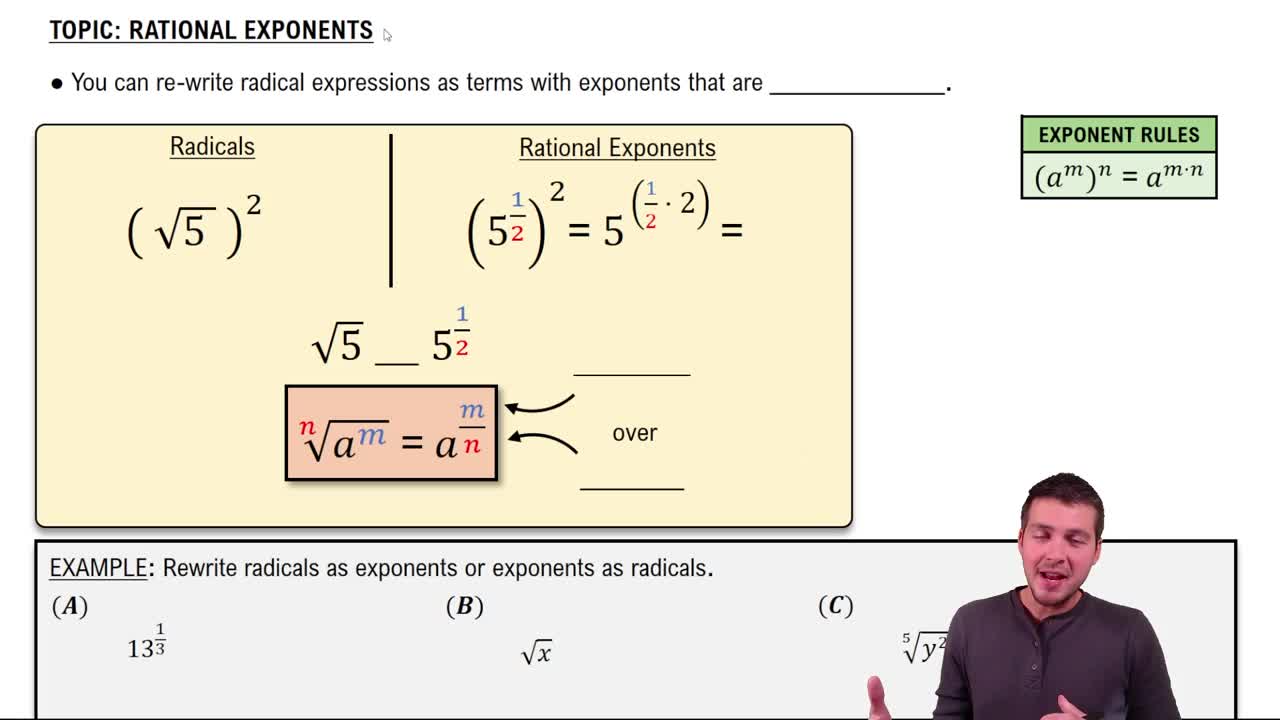Textbook Question
In Exercises 1–14, write each number in decimal notation without the use of exponents.
3.8X10²
390
views
2
rank
 Verified step by step guidance
Verified step by step guidance Verified Solution
Verified Solution



 7:39m
7:39mMaster Introduction to Exponent Rules with a bite sized video explanation from Patrick Ford
Start learning